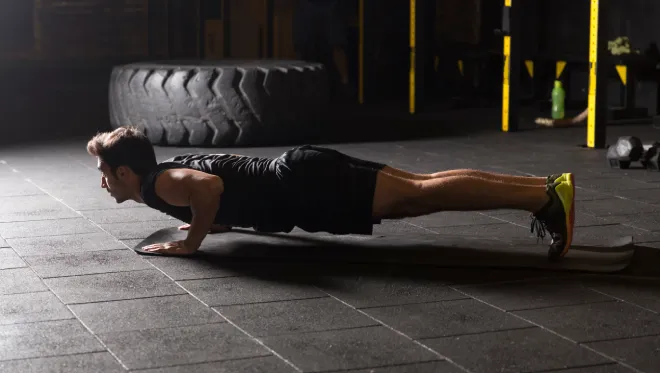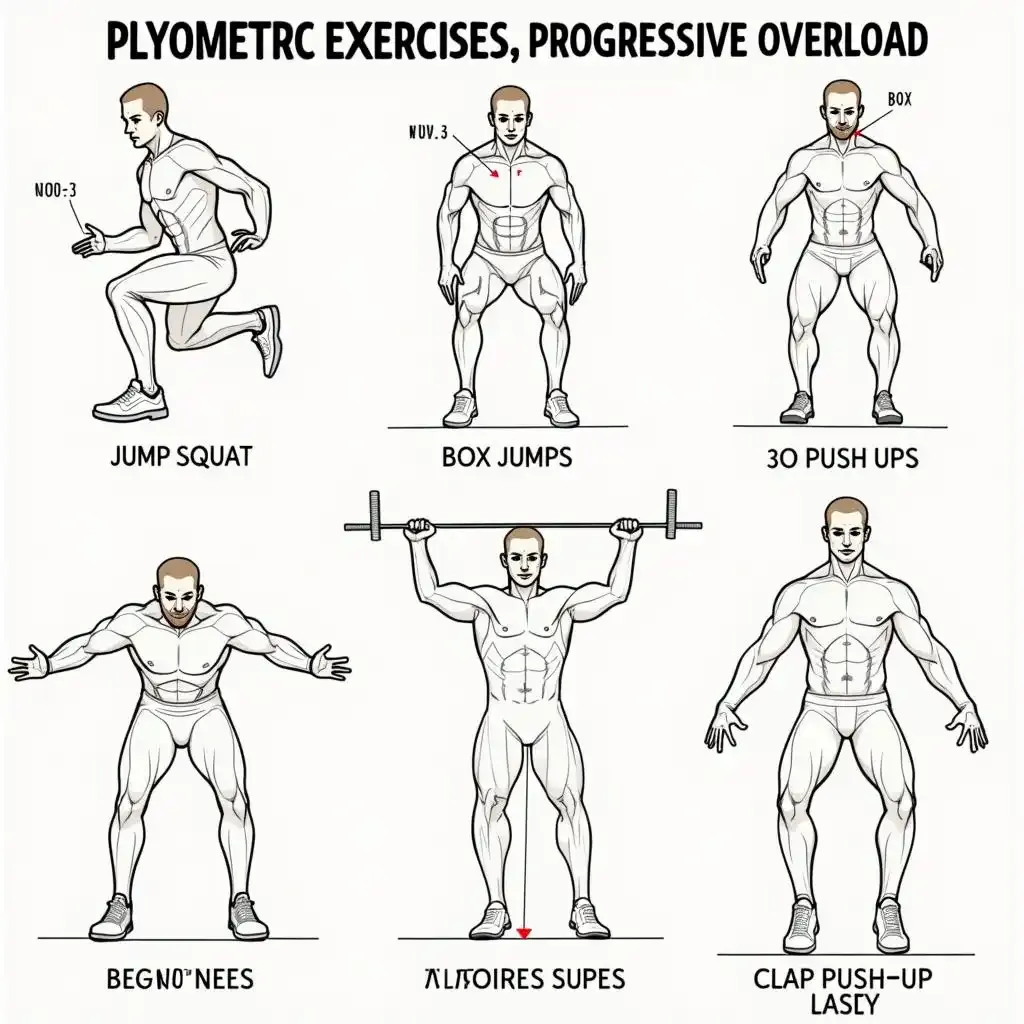Table of Contents
Hey there, future fitness fanatics! Ever wondered what makes athletes so amazing? Or maybe you just want to feel stronger and healthier? Well, the secret weapon many use is strength and conditioning. It's not just about lifting heavy weights; it's about building a better, more resilient YOU. At kizworld, we believe everyone can benefit from understanding the basics of strength and conditioning – whether you're training for a marathon, aiming for a personal best in your favorite sport, or simply want to improve your overall health and well-being. In this article, we’ll explore the world of strength and conditioning, from the fundamental principles to advanced techniques, ensuring you have the knowledge to begin on your fitness process. We'll look at how strength and conditioning programs are adapted for different age groups and abilities, so everyone can find a routine that works for them. Get ready to learn, grow, and free your inner athlete!
Key Concept | Description | Benefits |
|---|---|---|
Strength Training | Exercises that build muscle mass and strength. | Increased muscle mass, improved bone density, boosted metabolism. |
Conditioning | Exercises that enhance endurance, stamina, and cardiovascular health. | Improved cardiovascular health, increased stamina, enhanced respiratory function. |
Mobility & Flexibility | Exercises to improve range of motion and flexibility. | Reduced risk of injury, improved posture, increased athletic performance. |
Strength Training | Exercises focusing on explosive movements. | Increased speed, agility, and strength output in sports and activities. |
Program Design | Tailoring workouts to individual needs and goals. | Optimized results, reduced risk of overtraining, personalized fitness plan. |
Progressive Overload | Gradually increasing the intensity or volume of workouts over time. | Continuous improvement, adaptation to training stimuli, avoidance of plateaus. |
Recovery | Adequate rest and nutrition for muscle repair and growth. | Reduced risk of injury, improved performance, faster recovery times. |
Master Strength & Conditioning: Ultimate Guide
Strength and Conditioning: Building a Better You
Why Strength and Conditioning Matters
Hey there, fellow fitness explorers! I'm super excited to talk about strength and conditioning – it's like giving your body a superpower upgrade. Think of it as building a magnificent castle, brick by brick. Each workout is a brick, strengthening your foundation and helping you grow taller and stronger. It’s not just about looking good; it's about feeling amazing, too! You'll have more energy, sleep better, and even feel more confident. It’s all about becoming the best version of yourself. Want to learn more about building your own workout routine? Check out our guide on strength training for more tips!
Benefit | Example |
|---|---|
Increased Strength | Lifting heavier objects with ease. |
Improved Endurance | Running longer distances without getting tired. |
Enhanced Flexibility | Easier to bend and stretch. |
Calisthenics: Your Bodyweight Buddy
Now, let's talk about my personal favorite: calisthenics! It's like having a personal gym that follows you everywhere. No fancy equipment needed – just your own body weight and a little bit of space. Think push-ups, pull-ups, squats – these are all calisthenics exercises! They're super effective for building strength, endurance, and flexibility. I love how versatile they are; you can do them anywhere, anytime. Need some inspiration? Explore our calisthenics workouts page for some fantastic ideas!
- Push-ups
- Pull-ups
- Squats
- Lunges
- Plank
Building Your Strength and Conditioning Plan
So, you're ready to start your strength and conditioning trip? Awesome! First, remember that consistency is key. Think of it as planting a tiny seed; you need to water it regularly to see it grow into a giant tree. Start slowly, maybe with just 15-20 minutes a day, three times a week. Listen to your body; rest when you need to. And don't be afraid to ask for help! If you're unsure where to start, consider checking out our personal training courses for a guided approach. Remember, it's a trip, not a race. Celebrate your small victories, and you'll be amazed at how far you can go!
“The body achieves what the mind believes.” – Napoleon Hill
Strength and Conditioning: Building a Better You
Understanding Strength and Conditioning Programs
Crafting Your Perfect Strength and Conditioning Plan
Hey there, fellow fitness adventurers! So, you're ready to examine into the world of strength and conditioning? Awesome! Think of it like building a LEGO castle – you start with a solid base, adding pieces gradually, making it stronger and more complex over time. It's all about finding the right balance between strength training (building those muscles!) and conditioning (boosting your endurance). For example, I love to start my day with calisthenics – push-ups, pull-ups, squats – they’re like my morning coffee, only way better for my body! You can easily incorporate calisthenics into a strength and conditioning routine, and it's perfect for beginners. If you're feeling lost, check out our page for some killer ideas!
Workout Type | Frequency | Example Exercises |
|---|---|---|
Strength Training | 2-3 times per week | Squats, Push-ups, Pull-ups |
Cardio Conditioning | 3-5 times per week | Running, Cycling, Swimming |
Flexibility and Mobility | Daily | Stretching, Yoga |
Listen to Your Body (Seriously!)
Now, here’s the super important part: listen to your body! It's not a race, it’s a process. Start slow, build gradually, and don't push yourself too hard, especially in the beginning. I remember when I first started, I was so eager to do everything at once, and I ended up sore for a week! It's like learning to ride a bike – you don't jump on and expect to be a pro immediately. You start with baby steps, gradually increasing your intensity and duration. Remember to rest and recover; your muscles need time to repair and grow stronger. Our guide on calisthenics frequency can help you find the perfect balance.
- Warm-up before each workout.
- Cool-down after each workout.
- Rest at least one day per week.
- Listen to your body – pain is a warning sign.
"The difference between ordinary and extraordinary is that little extra."
Understanding Strength and Conditioning Programs
Strength and Conditioning for Different Age Groups
Strength and Conditioning for Kids (Ages 6-12)
Hey there, future fitness stars! When I think about strength and conditioning for kids, I visualize it like building a super-strong treehouse. You wouldn't build it all at once, right? You'd start with a solid base, adding sturdy branches and fun features as you go. For kids, it's all about fun, foundational movements. Think running around like crazy, playing tag, climbing trees – these are all amazing ways to build strength and coordination! We should focus on games and activities that make them move. I’d also add some simple bodyweight exercises, like jumping jacks, squats, and planks, but always keep it playful. Make it fun, and they'll love it! Remember, safety first! Always supervise young ones during physical activity and ensure they understand proper form. Want some fun exercise ideas? Check out our calisthenics classes page for age-appropriate exercises!
Activity | Benefits |
|---|---|
Tag | Improves speed, agility, and coordination. |
Climbing | Builds upper body strength and improves balance. |
Jumping Jacks | Cardiovascular fitness and coordination. |
Strength and Conditioning for Teens (Ages 13-19)
Teenage years are like a rollercoaster – full of energy, growth spurts, and changes. It’s a time when their bodies are changing rapidly, so strength and conditioning is super important. Think of this phase as building the strong roots for a tall and mighty tree. Teens can handle more intense workouts, but we still need to be careful. We need to focus on proper form and avoid overtraining. I always tell teens to start with a mix of cardio, strength training, and flexibility exercises. They can do calisthenics, weight training, or team sports – whatever gets them moving! Remember, consistency is key, so find activities they enjoy and stick with it. Still unsure? Our gym training guide provides a range of options for teenagers.
- Cardio (running, swimming, cycling)
- Strength training (weights, calisthenics)
- Flexibility (yoga, stretching)
Strength and Conditioning for Adults (Ages 20+)
For adults, strength and conditioning is like maintaining a well-maintained car. Regular maintenance is essential to keep it running smoothly. It's all about building strength, endurance, and flexibility to stay healthy and active throughout life. Adults can explore a wide range of activities, from weightlifting and calisthenics to yoga and hiking. The key is to find something you enjoy and can stick with long-term. Remember to listen to your body, rest when needed, and don't be afraid to adjust your routine as you age. I’ve found that a balanced approach, incorporating all aspects of fitness, leads to the best results. For a personalized plan, check out our .
Advanced Strength and Conditioning Techniques
Plyometrics: Jumping into Fitness
Hey there, fitness friends! Let's talk plyometrics – the art of jumping! Think of it like this: you're a superhero, and each jump is a powerful burst of energy. Plyometrics are exercises that use explosive movements to build capability and strength. I love how they make you feel like you're defying gravity. Think of jumping jacks, box jumps, and even clapping push-ups. They're amazing for building fast-twitch muscle fibers, which are crucial for speed and agility. Don't try these without proper warm-up though, or you'll end up feeling like a deflated balloon instead of a superhero. To get started, check out our guide on – it's got plenty of plyometric exercises to get you started.
Plyometric Exercise | Muscles Worked | Beginner Tip |
|---|---|---|
Jump Squats | Legs, Glutes | Start with just bodyweight, focus on controlled movements. |
Box Jumps | Legs, Glutes | Use a low box initially and gradually increase height. |
Clap Push-ups | Chest, Shoulders, Triceps | Master regular push-ups before adding the clap. |
Progressive Overload: Level Up Your Gains
Now, let's talk about progressive overload – the secret sauce to continuous improvement. Think of it as a video game: you start at level one, and as you get stronger, you move up to level two, then three, and so on. Progressive overload means gradually increasing the intensity or difficulty of your workouts over time. This could be anything from adding more reps, sets, or weight to your exercises to increasing the difficulty of the exercises themselves. For example, if you're doing push-ups, you could start with knee push-ups, then regular push-ups, and eventually, advanced variations like decline push-ups. This constant challenge keeps your muscles guessing and forces them to adapt and grow stronger. If you’re feeling a bit stuck, check out our tips on to make sure you're not overdoing it.
- Increase reps (repetitions)
- Increase sets (groups of reps)
- Increase weight (if using weights)
- Increase difficulty (e.g., move from knee push-ups to regular push-ups)
Advanced Strength and Conditioning Techniques
Final Thought
Strength and conditioning isn't just about physical gains; it's about building mental resilience and cultivating a healthier lifestyle. Whether you're a seasoned athlete or just starting, remember to listen to your body, set realistic goals, and enjoy the process. The progression to a stronger, healthier you is a marathon, not a sprint. Embrace the challenge, celebrate your progress, and keep moving forward! Keep exploring the world of strength and conditioning at kizworld – your progression to a better you starts now!